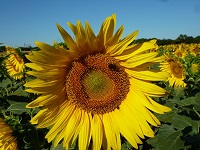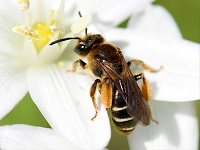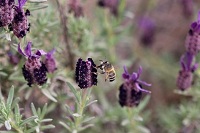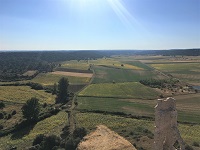
Welcome
Welcome to the official website of the Doñana Biological Station (EBD-CSIC)...

The Doñana Biological Station: EBD-CSIC
The Doñana Biological Station is a public Research Institute belonging to the Spanish Council for Scientific Research CSIC in the area of Natural Resources...

Mission
Our fundamental mission is to carry out multidisciplinary research of the highest standard directed to understanding the way in which biodiversity is generated, maintained and deteriorates, as well as the consequences of its loss...

Our methods
We apply many techniques within a multidisciplinary framework, from molecular genetics to remote sensing, and from modelling to physiological and isotopic analyses...

Monitoring the environment
Monitoring biodiversity at the Doñana Natural Space cover a wide range of communities, including both terrestrial and aquatic organisms...

Aims
Our aims include the study of the ecological and evolutionary processes by combining field work, mathematical and statistical models and physiological and genetic analysis...
 Outstanding
Outstanding
-
 An intensive farming system that benefits biodiversity and pollination is not economically profitable
An intensive farming system that benefits biodiversity and pollination is not economically profitable -
 Las abejas mineras que vuelan a principios de primavera son particularmente vulnerables al calor
Las abejas mineras que vuelan a principios de primavera son particularmente vulnerables al calor -
 The Doñana Biological Station studies how relationships between species come from individual interactions
The Doñana Biological Station studies how relationships between species come from individual interactions -
 Crop yield increase is compatible with biodiversity protection
Crop yield increase is compatible with biodiversity protection -
 International scientific team creates a global database to predict the role of animal pollination of commercial crops across the World
International scientific team creates a global database to predict the role of animal pollination of commercial crops across the World
 News
News
Content with tag pollination .
 An intensive farming system that benefits biodiversity and pollination is not economically profitable
An intensive farming system that benefits biodiversity and pollination is not economically profitable
• This biodiversity-friendly system helps to obtain a higher crop production, but farmers may not profit economically. This raises a discussion about if the transition to biodiversity-friendly farming mandatory may provide economic yield or if it may require...
 Las abejas mineras que vuelan a principios de primavera son particularmente vulnerables al calor
Las abejas mineras que vuelan a principios de primavera son particularmente vulnerables al calor
En España existen más de mil especies de abejas que polinizan en diferentes momentos del año y ambientes
 The Doñana Biological Station studies how relationships between species come from individual interactions
The Doñana Biological Station studies how relationships between species come from individual interactions
This study contributes to find the effects of the variation between individuals within communities using data on plant-pollinator interactions obtained in the Doñana Biological Reserve.





